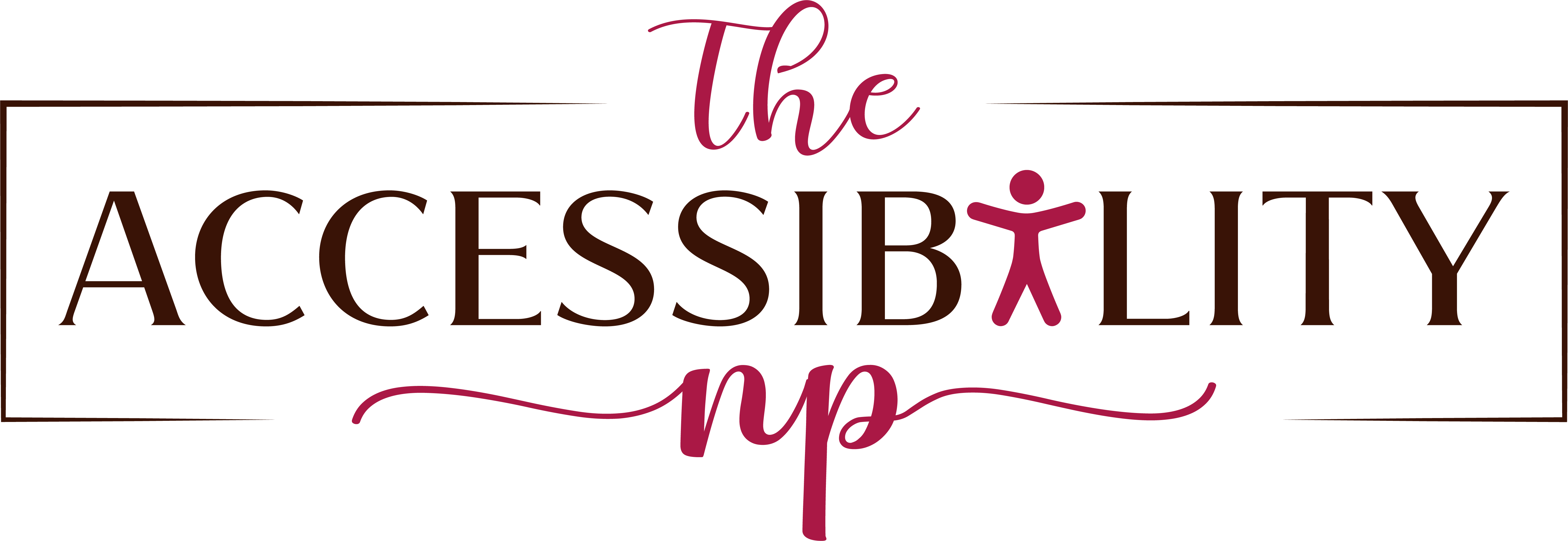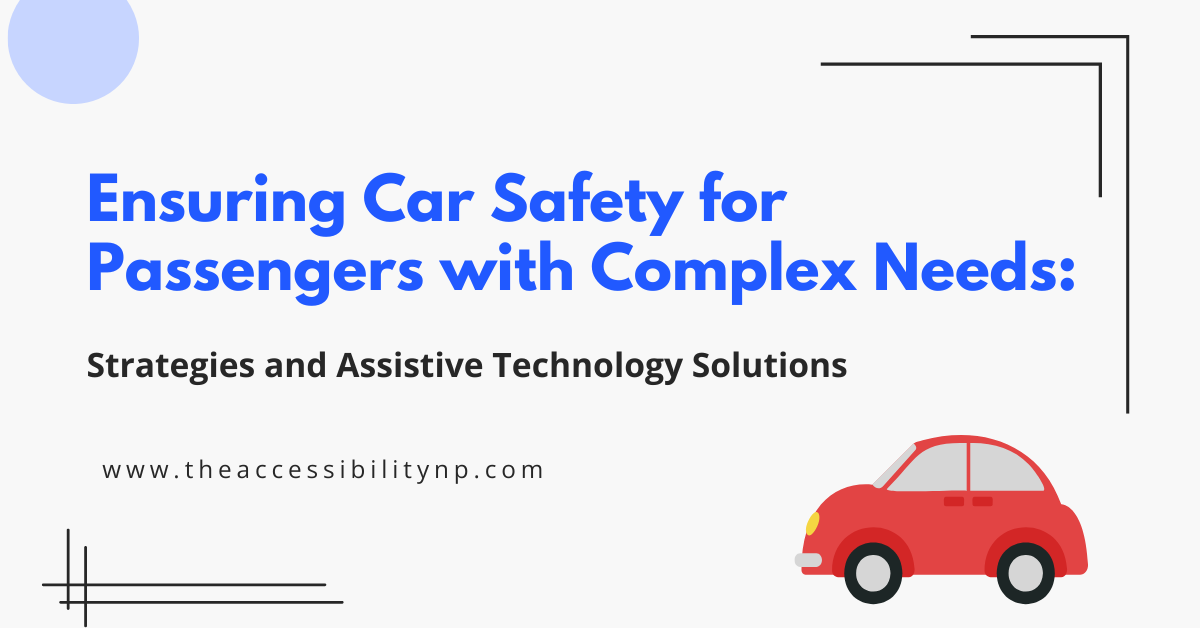Car travel can present unique challenges for individuals with complex needs, including those who are non-speaking. From sensory sensitivities to impulsive behaviors, traveling safely often requires thoughtful planning, specialized tools, and adaptive strategies. For families and caregivers, the primary goal is to create a safe and comfortable environment that supports each passenger’s unique needs. This guide offers practical strategies and assistive technology (AT) solutions to enhance security, comfort, and peace of mind for all involved.
Understanding Unique Safety Needs in Car Travel
Many individuals with specific support needs experience sensory sensitivities, anxiety, or other responses that can make car travel challenging. Some may find the sounds, motions, or confined space of a car overwhelming. Others may act impulsively by unbuckling their seat belts, reaching out of windows, or attempting to open doors, putting themselves at risk. Addressing these needs with customized strategies and tools helps create a safer, more secure travel experience.
Essential Strategies for Car Safety
- Prepare for a Calming Environment
Preparation can significantly reduce travel-related anxiety. Try creating a visual schedule, social story, or checklist to explain the journey and any stops along the way. For those who use alternative communication methods, visual aids or an AAC device can reinforce calm behaviors and set clear expectations about the trip. - Make the Car a Sensory-Friendly Space
For individuals sensitive to sensory input, a car can be overwhelming. Noise-canceling headphones, window shades, and sensory tools like weighted blankets or fidgets can help create a calmer environment. Calming music or white noise may also be soothing. - Keep Medical and Emergency Information Accessible
Consider keeping a visible information card in the car, listing essential medical information, emergency contacts, and specific communication needs. This information can be crucial for responders in an emergency. - Focus on Proper Positioning and Seating Safety
Proper seating is essential to comfort and security. Some passengers may benefit from high-backed, supportive car seats or harnesses, which help prevent sudden, impulsive movements. For those who have outgrown standard car seats but need additional support, specialized options like the EZ-On Vest provide extra stability and prevent climbing or self-harm behaviors during travel.
Assistive Technology and Tools for Car Safety
- Seat Belt Guards and Buckle Covers
Seat belt guards or buckle covers are useful for individuals who may impulsively unbuckle their seat belts. These devices require adult assistance to remove, which can prevent unauthorized unbuckling and keep passengers safely restrained. - EZ-On Vest or Specialized Safety Harnesses
The EZ-On Vest is a versatile safety vest that secures an individual to the car seat, limiting movement and preventing potentially risky behaviors like climbing or shifting out of position. It’s comfortable, adjustable, and designed for longer journeys. - Window Locks and Door Safety
For passengers who might open windows or doors impulsively, child safety locks on doors and windows are essential. If window-banging or reaching outside the car is a concern, clear plastic window guards can help prevent injuries. - Digital Visual Schedules or Tablet Mounts
Visual schedules mounted on a tablet can provide structure and reduce anxiety. Many apps offer step-by-step journey guides, showing destinations and stops, which keeps passengers engaged and informed. Ensure the mount is secure and easy to view. - Sensory Tools and Comfort Items
Sensory tools, like weighted lap pads, fidget items, or plush toys, can help passengers self-soothe during travel. A seat-back organizer with compartments keeps these items accessible without cluttering the car.
Behavioral Approaches to Enhance Car Safety
Behavioral strategies paired with assistive technology help reinforce calm, safe travel behaviors.
- Gradual Exposure to Car Rides
For those who find car travel challenging, start with short, manageable trips and gradually increase the duration. Positive reinforcement, like praise or a favorite item, encourages calm behavior and builds tolerance. - Teach Safe Behaviors and Reinforce Positively
Teach safe travel behaviors like buckling up and waiting for adult assistance with unbuckling. Positive reinforcement, through simple language or visual supports, can make these behaviors routine. - Incorporate Calming Techniques for Escalations
If a passenger becomes distressed, having go-to calming techniques can prevent escalation. Breathing exercises, a sensory item, or a brief stop to decompress may help reset the tone of the trip. - Support Communication Needs
Make AAC devices or other communication methods accessible in the car. Providing a way for passengers to express discomfort or needs can reduce frustration-driven behaviors.
Collaborating with Professionals for Optimal Car Safety
For passengers whose needs make car travel particularly challenging, working with specialists like occupational therapists, behavioral therapists, or AT consultants can provide tailored guidance.
- Occupational Therapy and Mobility Specialists
These professionals can recommend appropriate seating, restraints, and sensory tools to enhance safety and comfort. - Behavioral Therapists
Behavioral therapists can help families address specific behaviors that may arise during travel, offering techniques for safe and positive reinforcement. - Assistive Technology (AT) Consultants
AT consultants can suggest the right tools and technology to meet each passenger’s unique needs, from visual schedules to AAC options.
Adapt Strategies as Needs Evolve
As individuals grow and their needs change, revisit and adapt car safety strategies. Regularly assess what works, adjusting seating, sensory tools, and behavioral supports as needed. A flexible approach ensures continued safety and comfort.
Creating a safe car environment requires thoughtful planning, the right tools, and an understanding of each individual’s unique needs. With a combination of supportive strategies and assistive technology, families can foster a secure travel experience that’s also comfortable and empowering for everyone involved.
Disclaimers
- Product Disclaimer
I am not paid to promote any products mentioned in this blog. Product links, like the EZ-On Vest, are provided solely for informational purposes. - Safety Disclaimer
This guide is for informational purposes only. I am an AT and accessibility consultant, but this information does not replace personalized professional advice. Please consult with an occupational therapist, mobility expert, or other qualified professional to determine the best safety strategies and tools for your specific situation. - Patient-Client Relationship Disclaimer
This blog does not establish a patient-client relationship. Recommendations here are general and do not replace the personalized guidance you would receive from a professional consulting directly with you. If you need specific advice or support, please seek out a consultant or healthcare provider who can address your unique needs.

